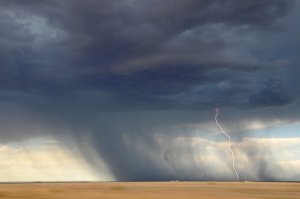Presented By: Civil and Environmental Engineering
Wind-resilient and sustainable architectural engineering
Girma T. Bitsuamlak

Lucy Chian on Unsplash
Sustainable and wind-resilient building design requires realistic modelling of urban microclimate interaction with building at various scales (component → building → neighbourhood → city). This includes both (i) normally recurring microclimate conditions driven by thermal variations and/or normal wind for building energy performance design, and (ii) extreme climate conditions such as hurricane landfall, tornado touchdown or extreme winter for capacity and safety design. Alan Davenport’s “wind-loading-chain” links the modelling of extreme synoptic wind, exposure, aerodynamics, and dynamics to particular design criteria. Its expansion to (i) non-synoptic extreme winds such as tornadoes and downbursts; (ii) normal micro-climatic loads such as thermal loads, (iii) optimal tall building/bridge aerodynamic solutions; (iv) performance based wind design methods for emerging tall-mass-timber buildings; and (v) community level wind performance assessments, will be presented, through representative research projects from each category. The roles of computational fluid dynamics and Artificial Intelligence (deployed at SHARCNet) complimenting the physical experiments (enabled by the Boundary Layer Wind
Tunnel Laboratory and WindEEE Dome) in realizing windresilient and sustainable architectural engineering will be emphasized.
Dr. Bitsuamlak is Canada Research Chair in Wind Engineering at Western University. He serves as Director (Research) for both the Boundary Layer Wind Tunnel Laboratory and WindEEE Research Institute, and Western’s Site-leader for SHARCNet computing centre. His team is actively working on modelling microclimate effects to enhance the performance of buildings and cities for extreme wind (e.g. hurricane and tornado safety), and normal climate (Building thermal and energy performance).
Tunnel Laboratory and WindEEE Dome) in realizing windresilient and sustainable architectural engineering will be emphasized.
Dr. Bitsuamlak is Canada Research Chair in Wind Engineering at Western University. He serves as Director (Research) for both the Boundary Layer Wind Tunnel Laboratory and WindEEE Research Institute, and Western’s Site-leader for SHARCNet computing centre. His team is actively working on modelling microclimate effects to enhance the performance of buildings and cities for extreme wind (e.g. hurricane and tornado safety), and normal climate (Building thermal and energy performance).

Lucy Chian on Unsplash
Explore Similar Events
-
Loading Similar Events...
